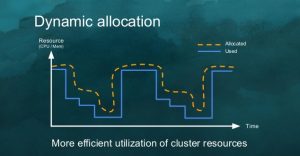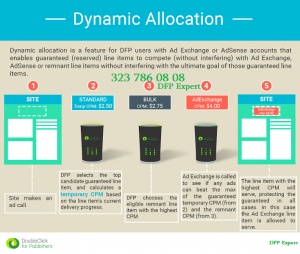Dynamic Allocation: How Publishers Can Benefit?
Dynamic Allocation is a method by which Google allows your non-guaranteed or in other words, remnant or unsold DFP impressions or inventories to compete with Ad Exchange buyers in order to get the highest price but without risking the existing DFP reservations.
Dynamic Allocation – Why Dynamic Allocation Was Created?
The reason behind this is to get the highest revenue for your non-guaranteed inventory. And that is why Dynamic Allocation was created.
Guaranteed and Non-Guaranteed Ads
As it is known, DFP enables publishers to define guaranteed and non-guaranteed (also called remnant) ads.
The guaranteed ads are usually directly sold between the advertiser and the publisher. The remnant ads are open for competition to external SSPs.
DFP is made in such a way as to serve first the guaranteed impressions, and when it runs out of them, only at that time it turns its attention to the non-guaranteed line items. This may give the impression that DFP just assigns the remnant items to any bidders to fill the gaps.
Dynamic Allocation – Guaranteed and Non-Guaranteed Ads
Now comes the dynamic allocation and this ensures that the non-guaranteed or remnant items get the highest prices available at the moment and that without compromising the guaranteed campaigns. Dynamic allocation can be thought of as a system, which guarantees the highest revenue by automatically allocating the impressions between the guaranteed and non-guaranteed ads.

When dynamic allocation in enabled in DFP, the latter compares all line items in guaranteed and non-guaranteed fields according to the priority and value for the current moment. If there is a high priority guaranteed item, them DFP serves it and the process ends. In other cases, DFP goes down for the remnant inventories and starts to compete their price against the temporary CPM it defined for the current impression based on the historical bid data. Thus it is able to choose the best price for the non-guaranteed items without compromising the guaranteed ads.
It is obvious that Google’s dynamic allocation technology is good for the publishers as it allows them to use their inventories, both guaranteed and the remnant, to a maximum level in order to bring them the highest revenues possible. And what is good that the publishers do not need to go into the very deep details as to how this dynamic allocation works, as it will function ideally once enabled. It is important to remember only that by setting competition between the DFP guaranteed ads and the non-guaranteed items or AdExchange items, DFP uses dynamic allocation to maximize the revenues of the publisher and avoid the deficiencies of the static waterfall method.

